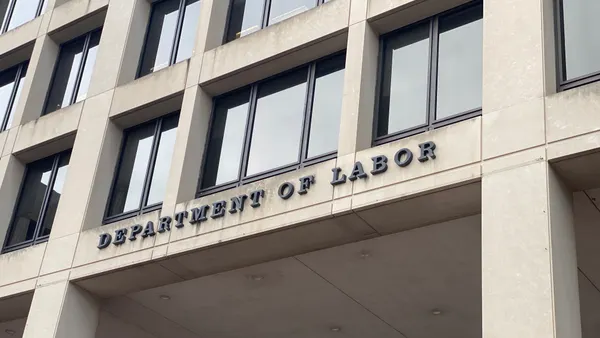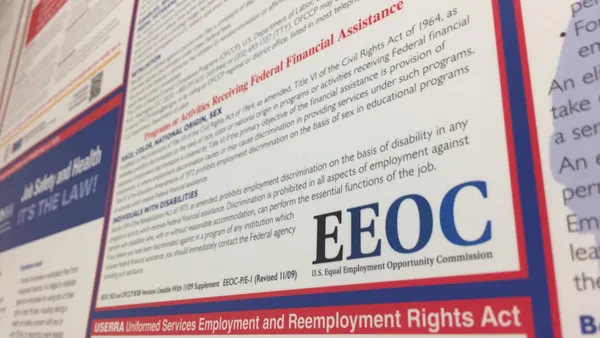Dive Brief:
- A former vice president at Bayer could not show evidence of retaliation after she experienced negative events at work after she emailed a complaint to a supervisor, the 3rd U.S. Circuit Court of Appeals ruled Sept. 7 (Laurora v. Bayer Corp., No. 21-2764 (3rd Cir. Sept. 7, 2022)).
- The VP complained after a supervisor removed one of her direct reports from a work project due to the employee’s pregnancy and impending leave. The supervisor responded, disagreeing with the plaintiff’s assessment and her approach. In her allegation, the VP laid out a series of events that followed that she attributed to retaliation: a negative rating for her performance review, denial of a position, elimination of her role and failure to find her a new role after hers was eliminated.
- The 3rd Circuit was not convinced. Because the supervisor’s response was “ambiguous” — registering either an “objection to the approach Appellant took in raising her concerns or to her complaint itself” — it could not serve as direct evidence, the court said. Nor could the plaintiff show circumstantial evidence, as she could not establish pretext for any of the four adverse actions she experienced, it concluded.
Dive Insight:
The Bayer ruling — which applies in Delaware, New Jersey and Pennsylvania — demonstrates the stringent requirements that exist to demonstrate retaliation, even when elements of the case may seem strong.
Direct evidence in a retaliation case must show that decision-makers placed “substantial negative reliance on an illegitimate criterion in reaching their decision,” the court explained in its discussion, and also that “the person expressing bias acted on it when he made the challenged employment decision.” This is a deliberately high hurdle, the court noted.
To show circumstantial retaliation under the commonly applied McDonnell Douglas burden-shifting framework, several factors must be present: an employee must engage in protected activity, the employer must have taken an adverse employment action against her and there must be a causal connection between the employee’s participation in the protected activity and the adverse employment action.
If the employee is able establish these three factors in a prima facie case, the burden shifts to the employer to articulate a nondiscriminatory reason for the actions. If the employer does so, it shifts again to the employee to show that such reasons are mere pretext for retaliation.
Often — as in the Bayer case — the employee is unable to develop a case for pretext. Such was the situation in two cases from the past few years: that of an employee who sued AutoZone for retaliation and and that of a worker who sued Lowe’s for harassment and bias.













